 |
 |
 |
 |
CT scan procedures in children in France over the period 2012-2018 and associated radiological exposure
Report No. IRSN 2022-00242. ¦ English ¦ Institut de Radioprotection et de Sureté Nucleaire ¦ 2022 ¦ 26 p.
In accordance with its missions in the “Code de la santé publique” (French Public Health Code), the French Institute for radiation protection and nuclear safety (IRSN) periodically analyses the exposure of the French population to ionising radiation due to diagnostic medical imaging procedures. To complete the "ExPRI 2017" study on exposure to ionising radiation of the general population due to diagnostic procedures in France in 2017, a specific study was conducted about CT (computed tomography) scan procedures in children under 16 years of age in France over the period 2012-2018 and the associated radiological exposure.
|
This study was based on CT scan procedures in children extracted from a representative sample panel of health insurance beneficiaries. The year-by-year analysis (i.e., without individual follow-up of the children from one year to the next) made it possible to evaluate, among other things, the evolution over the period studied of: the frequency of CT scan procedures (number of procedures per 1,000 children) per year; the proportion of children who had at least one CT scan procedure per year.
|
 |
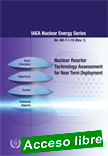 |
Nuclear Reactor Technology Assessment for Near Term Deployment
IAEA Nuclear Energy Series No. NR-T-1.10 (Rev. 1) ¦ English ¦ STI/PUB/2002 ¦ 164 p. ¦ Date published: 2022
This publication explains how a reactor technology assessment is performed and how the process and its results enable decision making for nuclear power planning and implementation at each of its phases. The methodology has been revised to incorporate developments since the first edition in 2013 and includes feedback from comprehensive training workshops offered for the last six years to Member States introducing nuclear power programmes.
|
The aim of this publication is to help newcomer Member States to understand the complexity involved in the selection of the most suitable reactor technology as well as obligations and responsibilities integral to an unbiased assessment. The publication can also be used by countries that already have nuclear power programmes, to assist in their selection of the next nuclear power plant.
|
 |
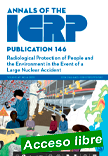 |
Radiological Protection of People and the Environment in the Event of a Large Nuclear Accident
ICRP Publication 146 ¦142 p. ¦ Vol. 49 ¦ N. 4 ¦ Date published: 2020
This publication provides a framework for the protection of people and the environment in a large nuclear accident, drawing on experience of the Chernobyl and Fukushima accidents. In managing accidents, the Commission makes a distinction between the early and intermediate phases, considered emergency exposure situa-tions, and the long-term phase, considered an existing exposure situation.
|
In emergency and existing exposure situations, mitigating the radiological consequences on humans and the environment is achieved using the fundamental principles of justification of decisions and optimisation of protection. The Commission recommends a set of reference levels for the optimisation of protection of the general population and responders, both on-site and off-site, for all accident phases. Implementation of protective actions should not only take account of radiological factors, but also consider societal, environmental, and economic aspects to protect health, ensure sustainable living conditions for the affected people, ensure suitable working conditions for the responders, and maintain the quality of the environment. In the early phase of an accident, urgent protective actions have to be taken, often with little information. Decisions rely on actions identified during preparedness planning that best match the actual situation. During the intermediate phase, protective actions reduce radiation exposures progressively. When the radiological situation is sufficiently characterised, the long-term phase begins, during which further protective actions are implemented to improve living and working conditions. Authorities should invite key representative stakeholders to participate in the preparedness process, and in the management of the successive phases of the accident. It is the role of the authorities to implement radiation monitoring and health surveillance, and to provide the conditions and means for sharing information and expertise to enable individuals to develop a radiological protection culture and to make informed decisions about their own protection.
|
 |
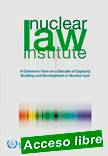 |
Nuclear Law Institute : A Collective View on a Decade of Capacity Building and Development in Nuclear Law
STI/PUB/1962 ¦ English ¦ 276 pages ¦ Date published: 2022
The Nuclear Law Institute (NLI) is one of the main activities within the IAEA's training programme on nuclear law and legislative drafting. With approximately 600 officials trained since 2011, the NLI has made a major contribution to the establishment and enhancement of adequate national nuclear legal frameworks in Member States. This publication is intended to provide information on the background, programme and methodology of the NLI, and its impact on Member States.
|
Reflection on current topics, trends and developments in international and national nuclear law to which the NLI has contributed through the past decade is also included. The publication brings together contributions from NLI organizers, facilitators, lecturers and alumni.
|
 |
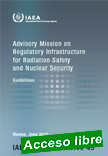 |
Advisory Mission on Regulatory Infrastructure for Radiation Safety and Nuclear Security
IAEA Services Series No. 45 ¦ English ¦ IAEA-SVS-45 ¦ 54 pages ¦ Date published: 2022
The information provided in this publication is intended to encourage consistency and comprehensiveness in the preparation and conduct of an initial or follow-up RISS, by both the advisory mission team and the host country. This publication is based on IAEA Services Series No. 38, Advisory Mission on Regulatory Infrastructure for Radiation Safety Guidelines.
|
.
|
 |
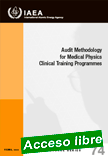 |
Audit Methodology for Medical Physics Clinical Training Programmes
Training Course Series No. 74 ¦ English ¦ IAEA-TCS-74 ¦ 88 p. ¦ Date published: 2022
The objective of this publication is to promote the quality improvement of CTPs (continuous professional development), irrespective of their content, structure and medical physics specialty, through providing a methodology and standardized tools to carry out voluntary or formal independent audits. The methodology is applicable to established, as well as new CTPs, and promotes monitoring of CTPs within a structured quality management system.
|
This document is also adaptable to different contexts and to CTPs in different settings. Part of this methodology may also be used for self-assessment, in preparation for an audit, or as a practice to support the monitoring of quality of a CTP. This publication is addressed to all professionals involved in establishing, delivering, or leading a CTP in medical physics, as well as to the residents, for clarifying standards and managing expectations.
|
 |
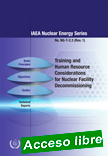 |
Training and Human Resource Considerations for Nuclear Facility Decommissioning
IAEA Nuclear Energy Series No. NG-T-2.3 (Rev 1) ¦ English ¦ STI/PUB/1959 ¦ 84 p. ¦ Date published: 2022
Recent decades have seen a significant increase in the number of decommissioning projects undertaken globally. Decommissioning technologies have advanced, driven by innovations in digitization and robotics, and the Systematic Approach to Training (SAT) methodology is now being applied to the decommissioning phase of all types of nuclear facilities.
|
This publication provides practical information and examples of good practices in training personnel for decommissioning activities, based on Member States’ experience, including guidance on the application of SAT methodology. The increasing use of digital and web-based tools to enhance competence development for implementation of decommissioning programmes is also discussed.
|
 |
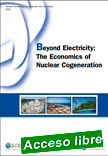 |
Beyond Electricity: The Economics of Nuclear Cogeneration
Nuclear Energy Agency, OECD ¦ (NEA No. 7363) ¦ 210 p. ¦ Date published: 2022
The purpose of this study is to fill this methodology gap by reviewing existing research and proposing an approach that can help assess the costs and benefits of developing other products besides electricity. This study also aims to assess the potential of nuclear energy to play a role in decarbonising the energy sector beyond the sole power sector by reviewing different cogeneration applications.
|
The expert group contributed case studies demonstrating the feasibility and economics of nuclear cogeneration in various member countries. It found that nuclear energy is well placed to play a role in meeting global decarbonisation targets by providing thermal energy for industrial applications.
|
 |
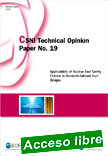 |
CSNI Technical Opinion Paper No. 19 - Applicability of Nuclear Fuel Safety Criteria to Accident-Tolerant Fuel Designs
Nuclear Energy Agency, OECD ¦ (NEA No. 7576) ¦ 56 p. ¦ Date published: 2022
This report evaluates the applicability of existing fuel design and performance requirements to some of the new ATF designs (coated zirconium alloy fuel rod cladding, FeCrAl fuel rod cladding, silicon carbide fuel rod cladding, doped uranium dioxide ceramic fuel pellets, uranium silicide ceramic fuel pellets), identifies new phenomena which create the need for new or different performance metrics and design requirements, identifies data gaps and discusses opportunities for international collaborative research to fill them.
|
A variety of new phenomena were identified for the examined ATF designs which challenged the applicability of existing performance metrics and analytical limits or created the need for new criteria. Recommendations to address these challenges are provided with the intention to inform future international research programmes and support ATF licensing.
|
 |
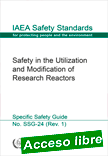 |
Safety in the Utilization and Modification of Research Reactors
IAEA Safety Standards Series No. SSG-24 (Rev. 1) ¦ English STI/PUB/1982 ¦ 71 p. ¦ Date published: 2022
This Safety Guide is a revision of IAEA Safety Standards Series No. SSG-24, which it supersedes. The current publication provides recommendations on how to meet the applicable safety requirements relating to the utilization and modification of research reactors. The recommendations focus on the categorization, safety assessment and approval of research reactor experiments and modification projects.
|
The publication also incorporates the relevant lessons learned from the accident at the Fukushima Daiichi nuclear power plant and elaborates on interfaces between nuclear safety and nuclear security. Specific safety considerations in different phases of utilization and modification projects are covered, including pre¬implementation, implementation, and post implementation phases. Guidance is given on operational safety of experiments, including the handling, dismantling, post-irradiation examination and disposal of experimental devices. The publication is intended to be of use to individuals within the operating organizations of research reactors, regulatory bodies, as well as the experimenters, technical support organizations and other persons involved in utilization and modification projects.
|
 |
| |
|
|

|
|
|
| |
|
|
| |
| |
|
|
| |
| |
|
|
| |
| |
|
|
|
| |
| |
